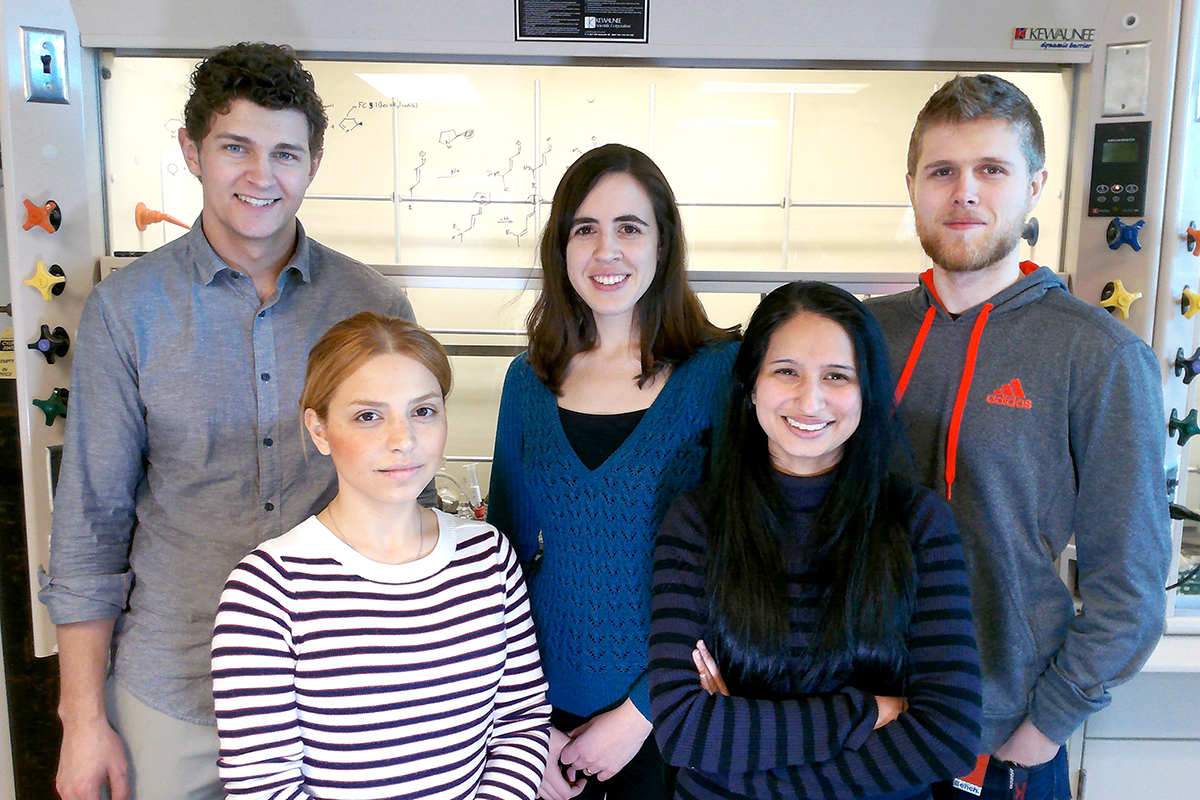Rebecca Davis is an assistant professor in the department of chemistry at the University of Manitoba. She completed her BSc in chemistry at Washington State University and her PhD at the University of California, Davis.
“I am a physical organic chemist,” Davis told the Manitoban. “Our research is in studying the mechanisms of organic reactions and using that information to develop new reactions and new catalysts.
“Physical organic chemistry is a very small field – there aren’t a lot of us in it. For me it’s fun to think about how mechanisms work and how two molecules come together to make a new one.”
Davis’ work focuses on asymmetric organocatalysis.
“This field actually has developed essentially in the same amount of time as I have,” said Davis. “It’s a young field and an exciting one to be in.”
“Organo-” refers to organic molecules – those that contain carbon atoms.
In chemistry, catalysts are substances that speed up chemical reactions by changing the energy requirements of the interactions. Catalysts are not consumed in the chemical reaction and are recycled at the reaction’s end.
This leaves us with the idea of asymmetry. If you look at your right and left hands, you notice that they are very similar but not identical. You cannot find a way to place them on top of each other so that they look the same – they are non-superimposable mirror images.
Non-superimposable mirror images occur in organic molecules all the time. These complementary molecules are known as enantiomers.
By understanding how asymmetric organocatalysis works, we can understand how to utilize it in the synthesis of enantiomeric compounds.
“In order for this field to develop much further and become a prevalent field of organic chemistry, we have to understand how these catalysts work on a molecular level,” said Davis.
Through understanding those mechanisms of action, not only can chemists develop new catalysts and apply them to new reactions, but also use current catalysts in new ways.
“We’re looking into expanding the field of reactions that known catalysts can be used in.
“Asymmetric catalysis is the underpinning of most pharmaceuticals at this point,” said Davis.
When it comes to certain drugs, enantiomeric form can mean the difference between medicine that helps you feel better and medicine that causes harmful side effects.
Like any new professor, Davis was tasked with the development of her own lab.
“I was really drawn to having the opportunity to do the research that I wanted to do,” said Davis. “One of the reasons I was looking in Canada for a position was because I like the research environment here.”
Any new Winnipegger is burdened with at least one question about the cold. Davis was no exception.
“I didn’t know cold got this cold,” she joked.
Davis commented on how the department of chemistry and its faculty have been very helpful regarding her new responsibilities as a professor.
“As a researcher, you don’t have any administrative duties; you’re just doing research. This job has many more factors to it,” said Davis. “The faculty is very supportive; it is one of the reasons I wanted to come here.”
Davis has also enjoyed her first few terms of teaching.
“One of the reasons I wanted to become a professor was I enjoy watching people learn, and knowing that I have had an influence in their lives and taught them something.”



